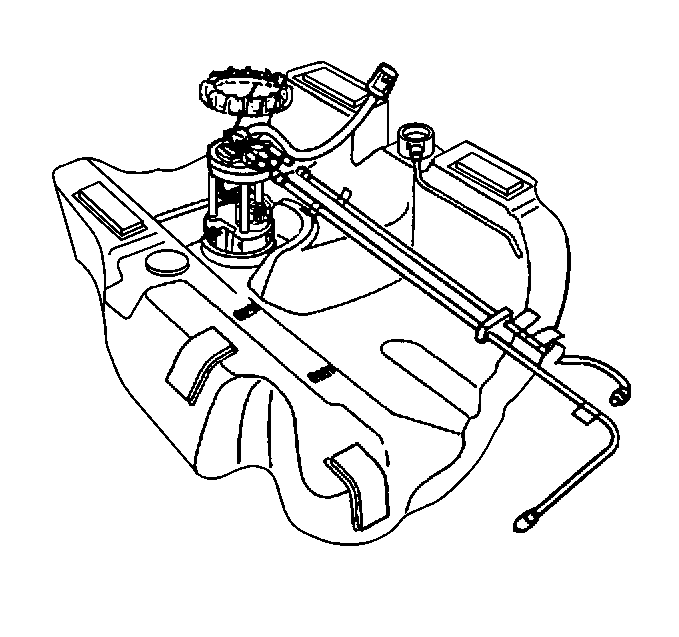Fuel Tank Replacement Replacement
Removal Procedure
Tools Required
J 37088-A , Fuel Pipe Separator Tool Set
Caution: Provide additional support when a vehicle is on a hoist:
• Before removing parts, support the opposite end. This helps prevent
the vehicle from slipping off. • Before removing major components, chain the vehicle frame to the
hoist pads at the same end as the removal. This helps avoid a tip-off.
- Relieve the fuel system pressure. Refer to Fuel Pressure Relief Procedure .
- Raise the vehicle and suitably support.
- Drain the fuel tank. Refer to Fuel Tank Replacement (Draining) .
- Disconnect the fuel feed pipe (4) at the filter (1) and return pipe (6) near fuel filter.
- Grasp both ends of the fuel feed pipe connection and twist 1/4 turn in each direction to loosen any dirt in quick connect fittings.
- Blow out dirt from quick connect fittings, using compressed air.
- Squeeze plastic tabs of male end connector of fuel filter.
- Pull connection apart.
- Grasp both ends of one fuel return pipe connection and twist 1/4 turn in each direction to loosen any dirt in quick connect fittings.
- Blow out dirt from quick connect fittings, using compressed air.
- Squeeze plastic tabs of male end connector of fuel filter.
- Pull connection apart.
- Disconnect the fuel fill hose and vent hose at fuel tank.
- Disconnect the fuel sender electrical connector (1).
- Remove the exhaust heat shield screws and reposition shield.
- Support the fuel tank (2) and remove the fuel tank retaining strap bolts (1).
- Lower the tank and disconnect the EVAP pipe
- Inspect the connectors for dirt and damage. Clean or replace as required.
- Remove the fuel sender assembly. Refer to Fuel Sender Assembly Replacement .
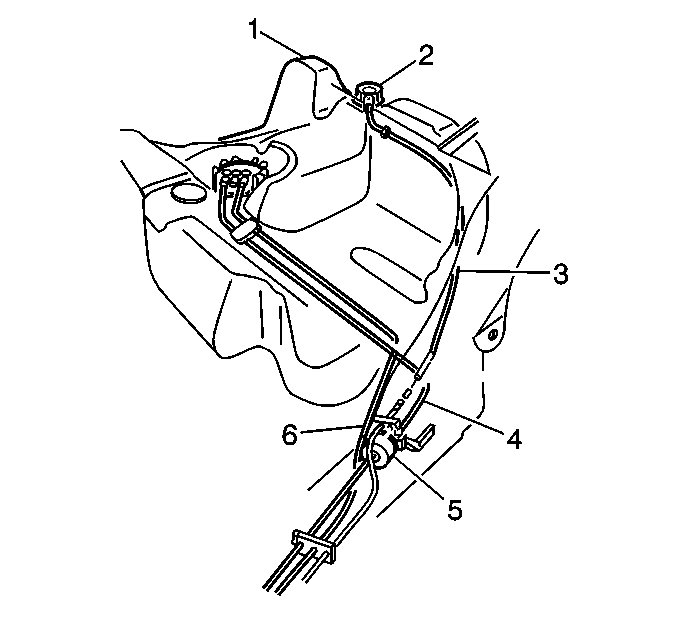
Important: If nylon fuel feed or return pipes become kinked, and cannot be straightened, they must be replaced.

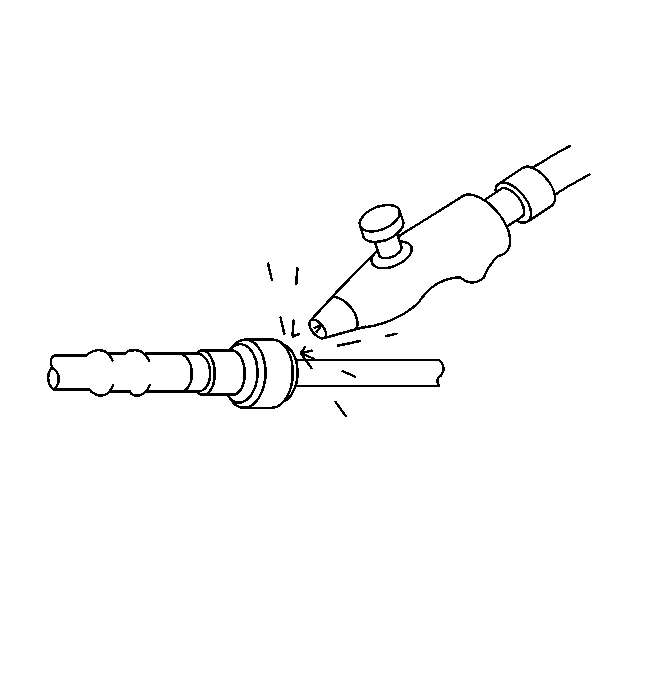
Caution: Wear safety glasses when using compressed air in order to prevent eye injury.
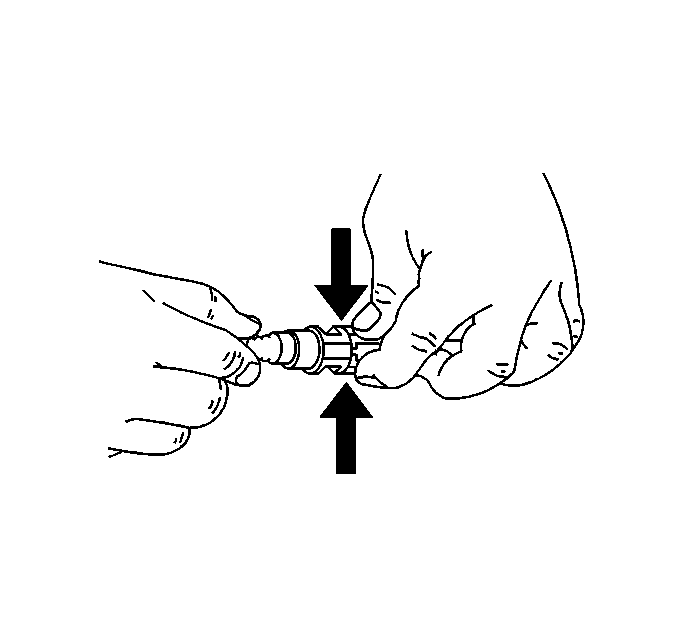



Caution: Wear safety glasses when using compressed air in order to prevent eye injury.


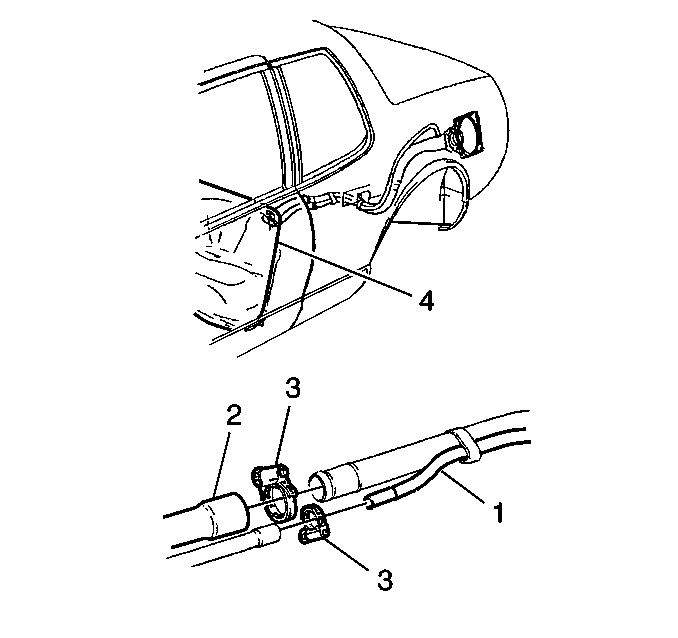

Notice: Do not bend the fuel tank straps as this may damage the straps.

Installation Procedure
- Install fuel sender assembly. Refer to Fuel Sender Assembly Replacement .
- Install fuel tank retaining straps attaching bolts with the aid of an assistant.
- Raise fuel tank and connect EVAP pipe.
- Install exhaust heat shield screws.
- Connect fuel sender electrical connector.
- Connect fuel fill hose and vent hose to fuel tank.
- Install fuel feed and return pipe quick-connect fittings.
- Push connectors together to cause the retaining tabs/fingers to snap into place.
- Once installed, pull on both ends of each connection to make sure connection is secure.
- Lower the vehicle
- Add fuel and install fuel filler cap (1).
Important: Assure proper location of fuel sender pipes.
Tighten
Tighten the strap bolts to 34 N·m (26 lb ft).
Caution: Always apply a few drops of clean engine oil to the male pipe ends before connecting the fuel pipe fittings in order to reduce the risk of fire and personal injury. This will ensure proper reconnection and prevent a possible fuel leak. During normal operation, the O-rings located in the female connector will swell and may prevent proper reconnection if not lubricated.
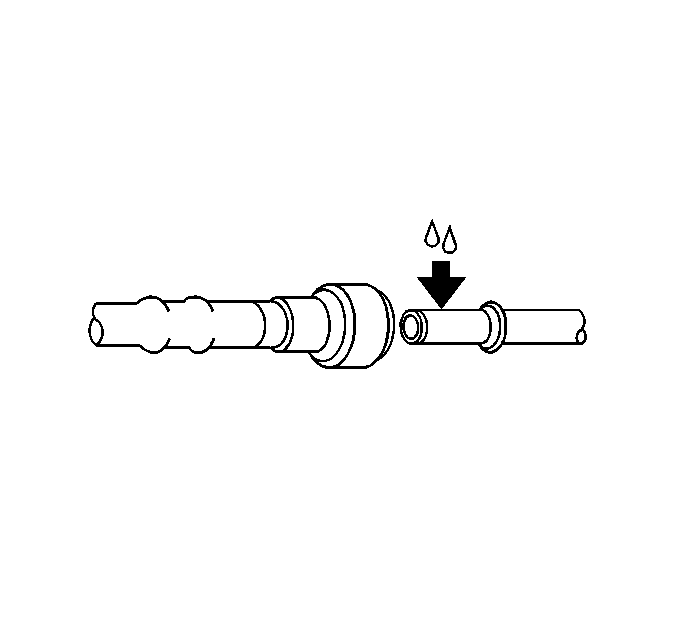
Apply a few drops of clean engine oil to the male connector pipe ends.
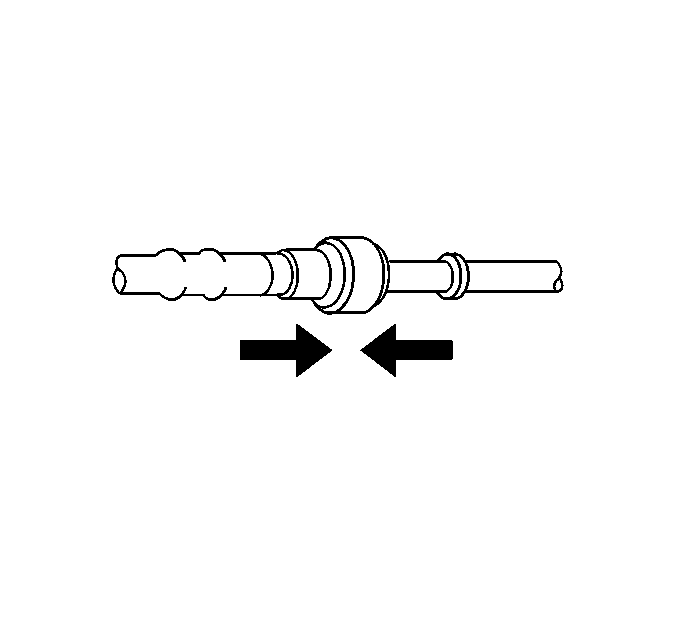
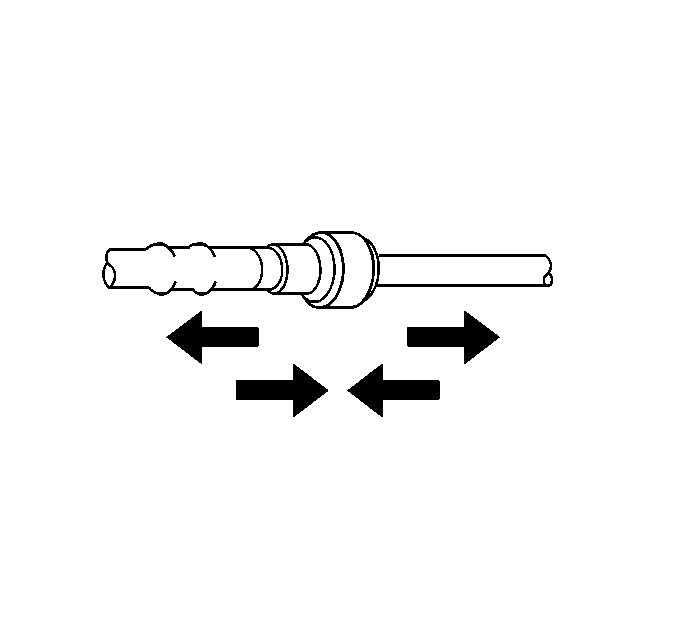
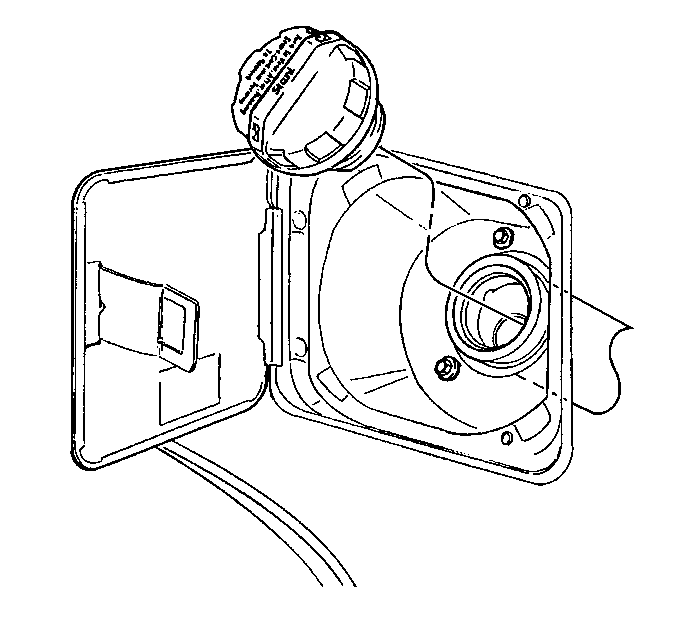
| 10.1. | Turn ignition switch to On for 2 seconds. |
| 10.2. | Turn the ignition switch to Off for 5 seconds. |
| 10.3. | Turn the ignition switch On. |
| 10.4. | Check for fuel leaks. |
Fuel Tank Replacement Draining
Removal Procedure
Caution: Do not drain the fuel into an open container. Never store the fuel in an open container due to the possibility of a fire or an explosion.
Notice: Drain the fuel from the complete system, including injector nozzle(s), the fuel pump, all fuel pipes, and the fuel tank if a vehicle is to be stored for any appreciable length of time. Draining the fuel will prevent the formations of fuel system deposits.
- Disconnect the negative battery cable.
- Loosen the fuel tank filler pipe cap.
- Remove fuel using a suitable hand operated or air operated pump.
- Install the fuel tank filler pipe cap.
- Install the negative battery cable.
